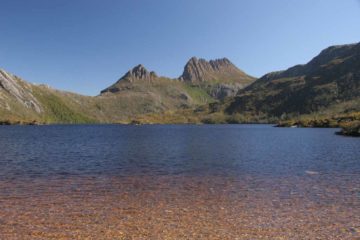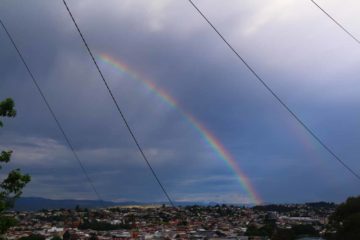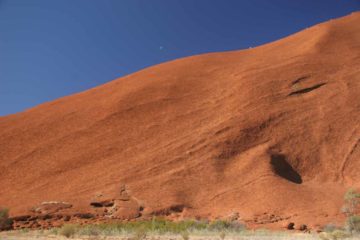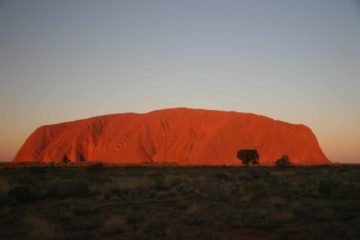About Hopkins Falls
Hopkins Falls was our waterfalling excuse to visit the quieter west end of the Great Ocean Road near the coastal town of Warrnambool. It was a short but wide waterfall (said to be 11m high and the widest in the country at 90m) on the Hopkins River so it was flowing even during our drought-affected visit back in November 2006, where that drought lasted for the better part of the decade. During a return trip back to the area in November 2017, the Hopkins River had significantly more flow (probably aided by the couple of days of heavy rains that rejuvenated the watercourses of Western Victoria), and the picture you see at the top of this page was an example of the falls in a healthier state than on our first visit.
Flanked by wide open agricultural fields that were once part of a wide field of flowing basalt lava, the falls and its surroundings were easily seen from a handful of lookouts all within close proximity to the car park. We were able to experience all of these lookouts to better appreciate the falls from different angles while also reading the interpretive signs to get a better appreciation of its history and significance. Overall, we spent about 30-45 minutes away from the car to take it all in, but the physical exertion was pretty minimal.
The lookouts nearest the car park revealed the Hopkins River upstream of the brink of the falls as well as the bridge (built in 1938) traversing the river, which was once the site of a treacherous ford claiming lives and resulting in several rescues during the days of European settlement in the late 19th century. The lookout nearest to the brink of the Hopkins Falls had a handy “Fotopol”, where I was able to screw on my DSLR camera for people shots and long exposure shots without the need for a tripod. Another 105m down some steps led to a lower lookout that also possessed a Fotopol in addition to the lower and more intimate vantage point of the Hopkins Falls.
According to the signage, three aboriginal clans (Kirrae whurung, Gundidj-mara, and Tjap whurrung) would gather around the area to catch abundant eel, share food, and socialize. The name of the falls was said to mean “eels bite the stones” in the Kirrae whurung tongue. The eels were said to have migrated from as far as the tropical waters of Vanuatu to spawn. More recently, the river (and falls) got its name from Major Thomas Mitchell who named it in honour of his friend Major John Paul Hopkins. Both of them were amongst the early European explorers attracted by the abundant water and rich volcanic soil (and hence the agricultural presence we noticed during our visits).
Related Top 10 Lists
No Posts Found
Trip Planning Resources
Nearby Accommodations
This content is for members only. See Membership Options.Featured Images and Nearby Attractions
This content is for members only. See Membership Options.Visitor Comments:
Got something you'd like to share or say to keep the conversation going? Feel free to leave a comment below...No users have replied to the content on this page
Visitor Reviews of this Waterfall:
If you have a waterfall story or write-up that you'd like to share, feel free to click the button below and fill out the form...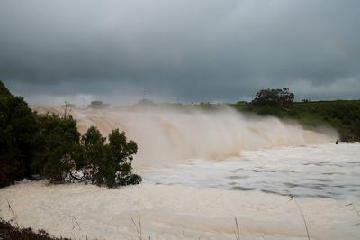 Hopkins Falls at full flow October 20, 2010 7:28 pm - We visited this falls in August 2010. The recent wet weather had the falls at a very high flow, and the spectacle was bringing in many of the locals to come and gawk at the sight. The park was full, and visitors were parking along the main road outside the park to get a look.… ...Read More
Hopkins Falls at full flow October 20, 2010 7:28 pm - We visited this falls in August 2010. The recent wet weather had the falls at a very high flow, and the spectacle was bringing in many of the locals to come and gawk at the sight. The park was full, and visitors were parking along the main road outside the park to get a look.… ...Read More



